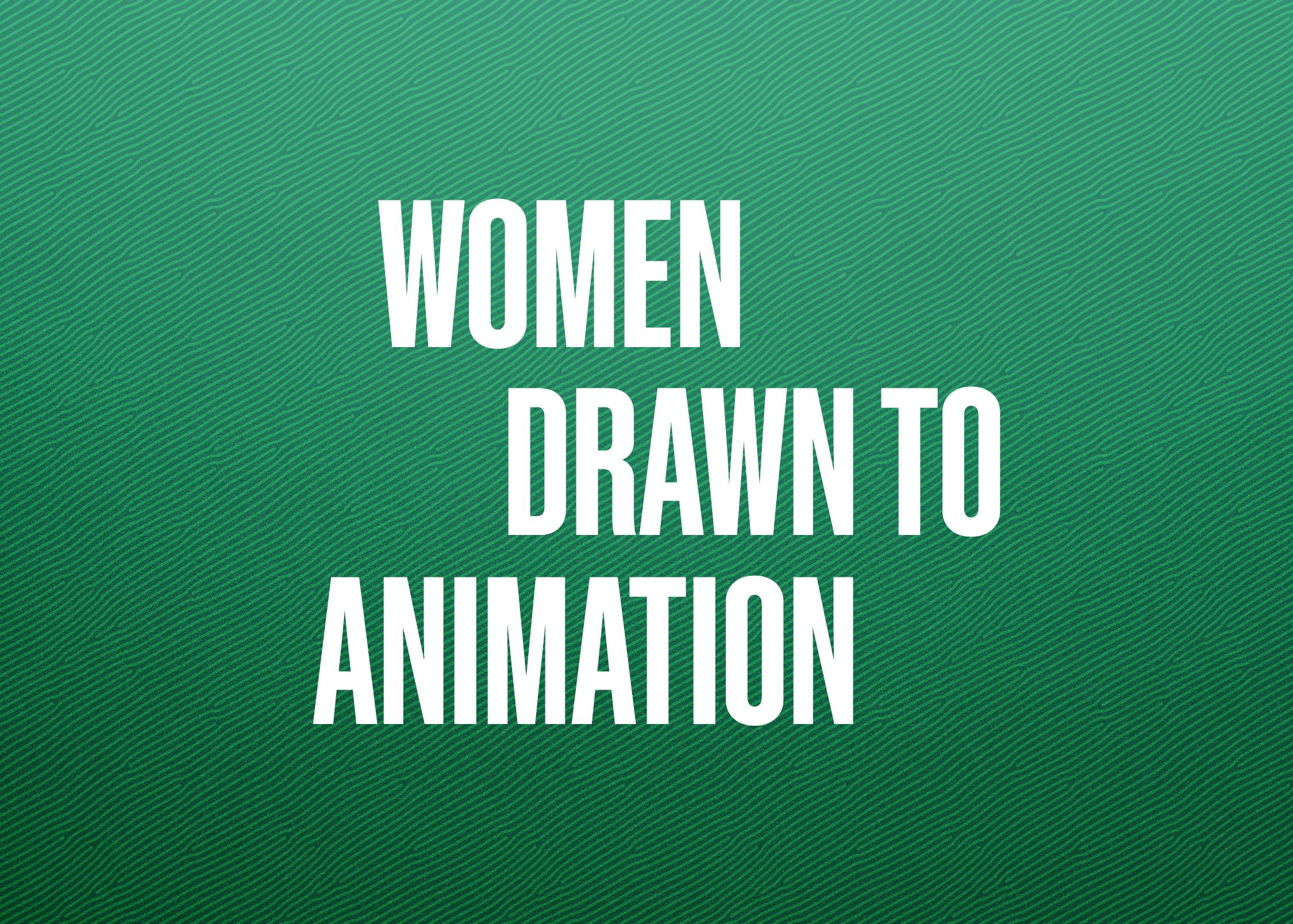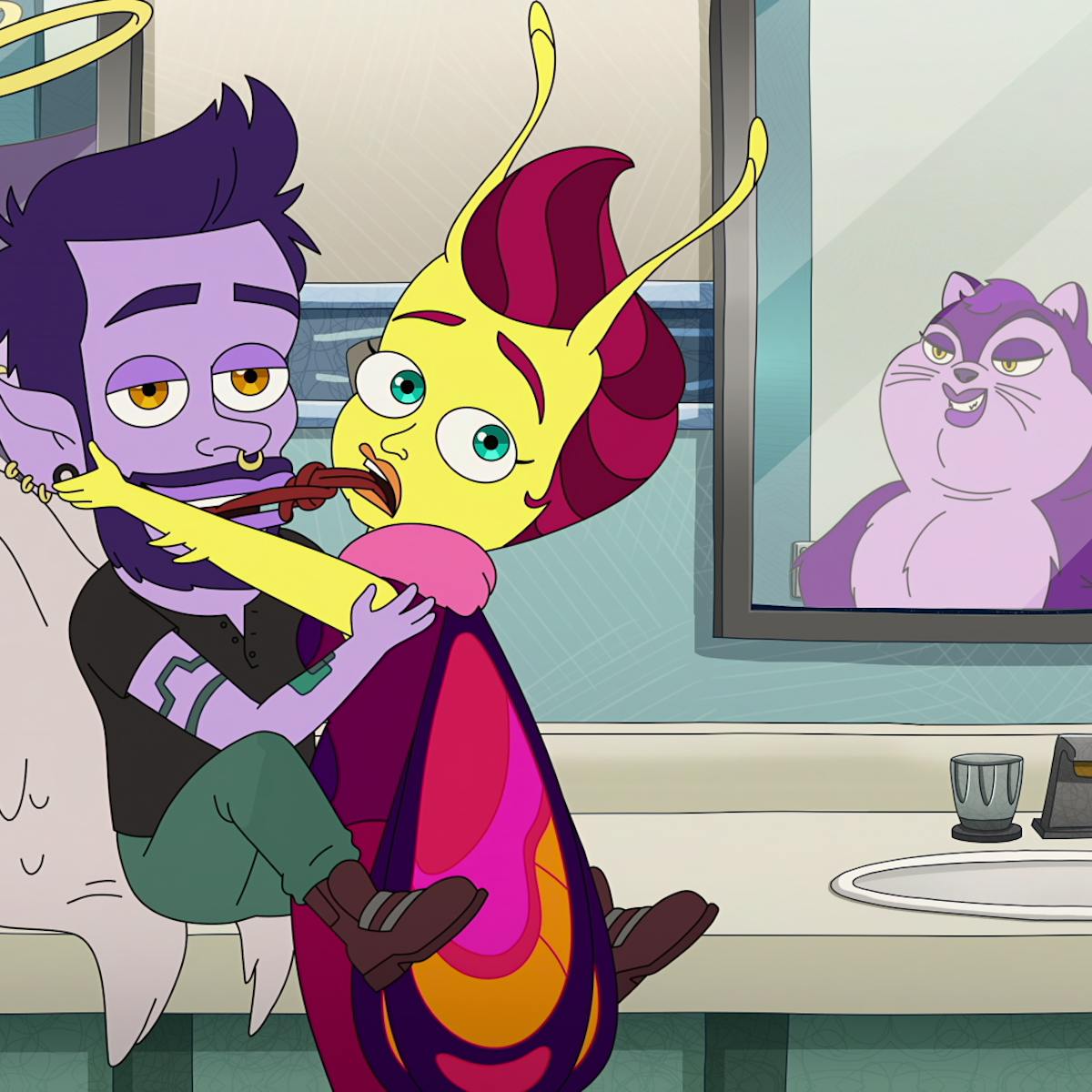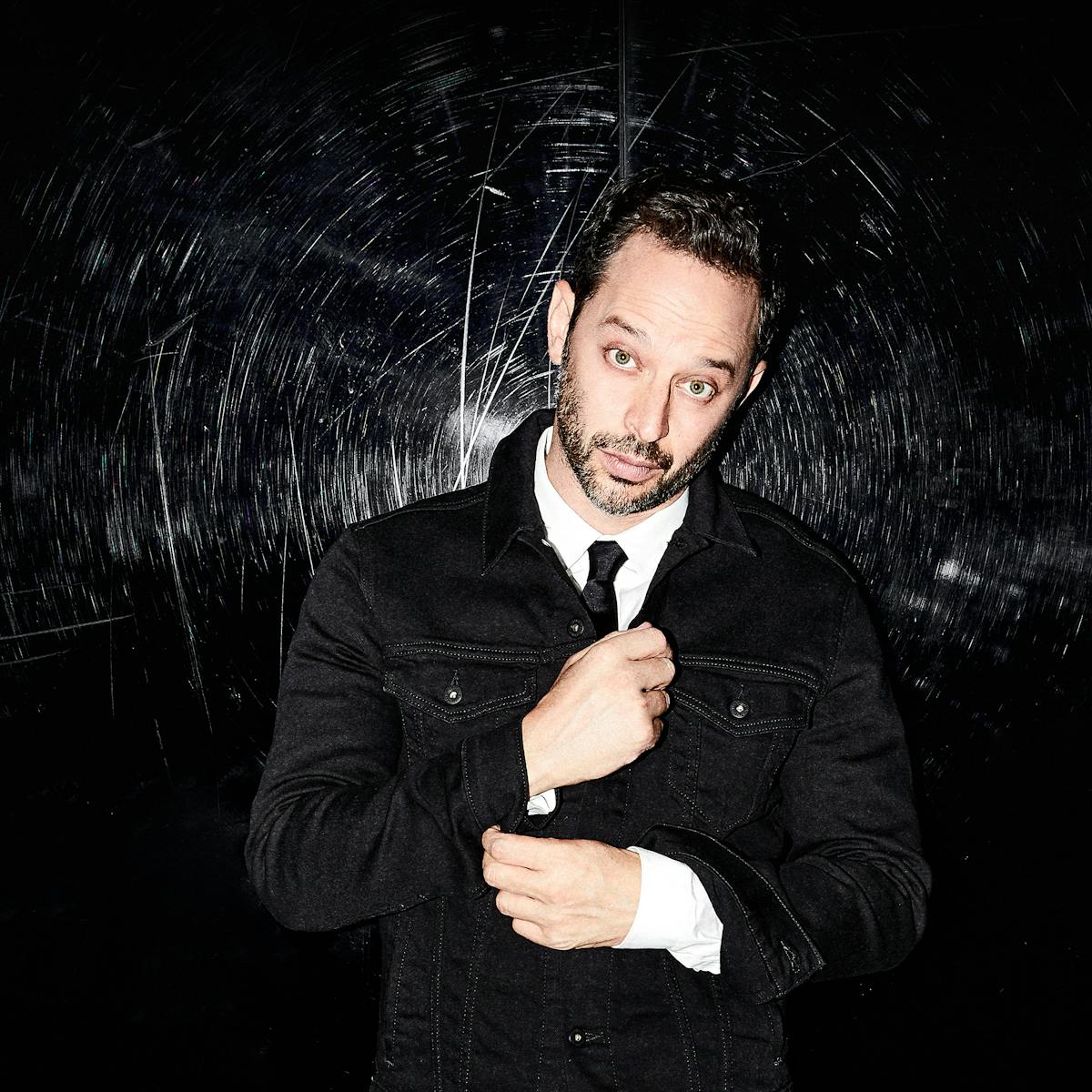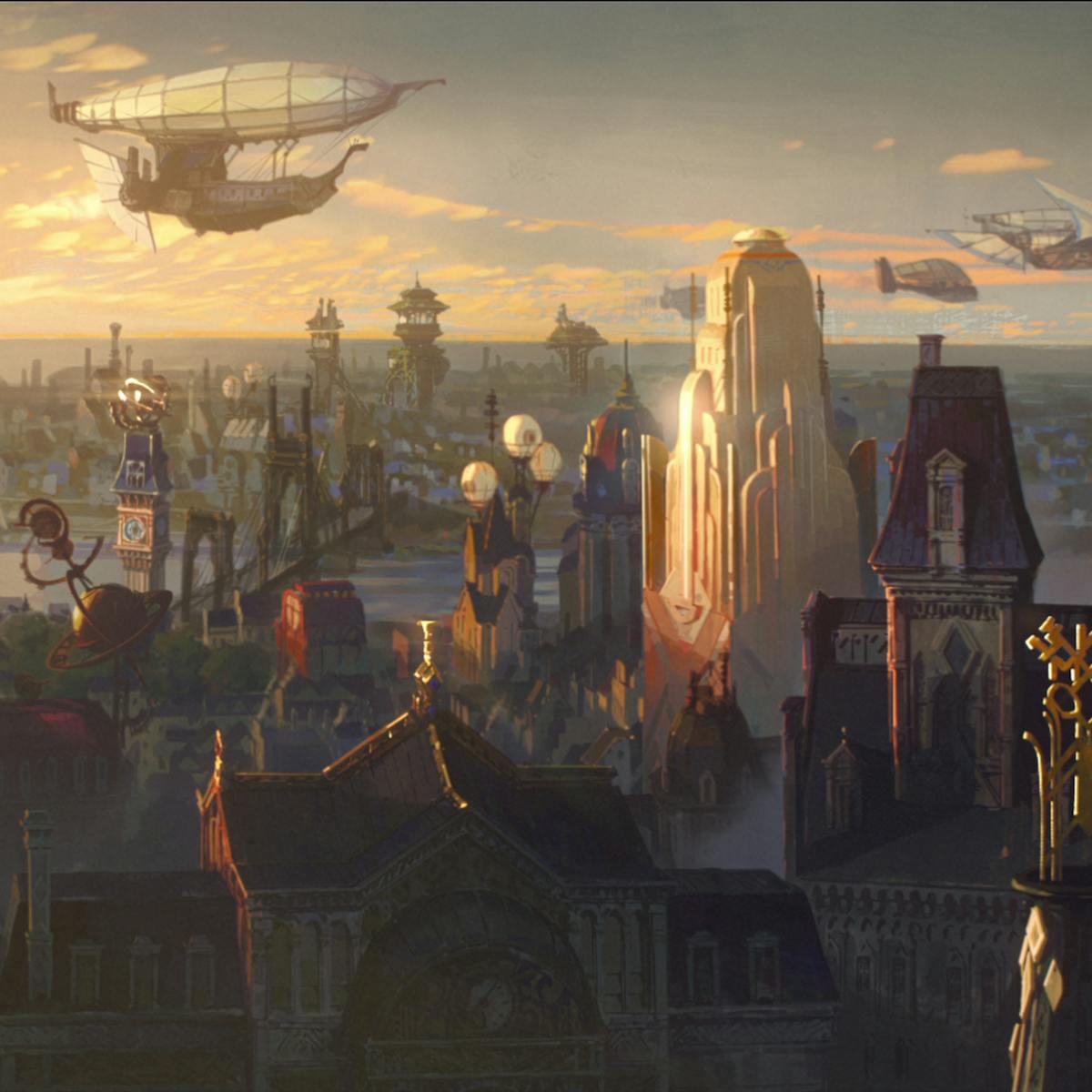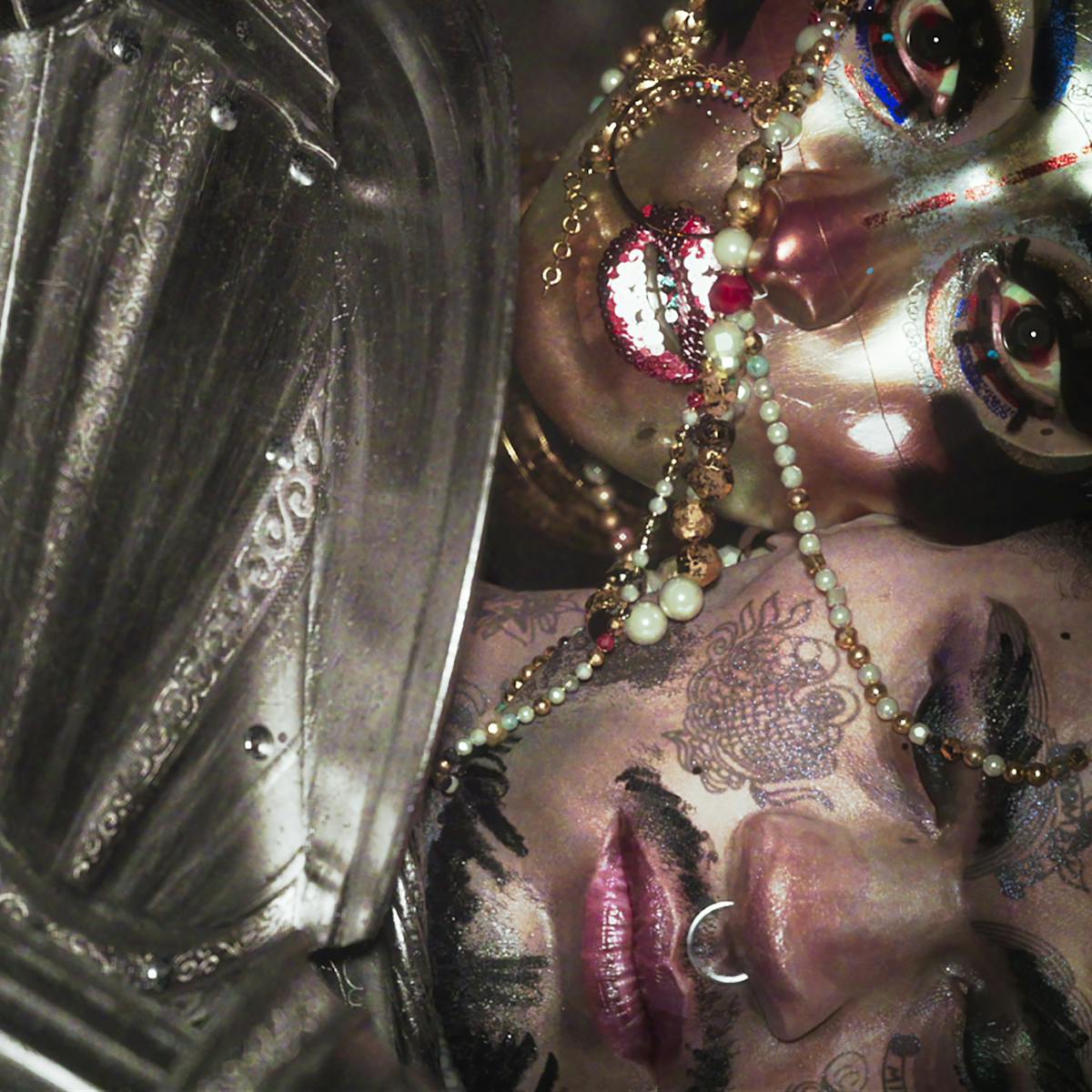FYSEE presents a conversation with the female creators of Big Mouth; Arcane; Love, Death + Robots; and Human Resources.
This year has been an especially exciting one for animated series. Along with the return of favorites like puberty-immersed comedy Big Mouth and adult sci-fi anthology series Love, Death + Robots, new standouts like Big Mouth’s creature-driven spinoff Human Resources and League of Legends-inspired — but very much not cursed — Arcane. Behind each of these stunning and diverse feats of animation are some very talented women.
Take Melinda Dilger, the executive producer of Arcane, which was nominated for two Emmys this year. Her production career includes working on titles like the live-action musical Mary Poppins Returns and animated series Rocko’s Modern Life. Dilger fell in love with Arcane’s tragic story of sisters Vi and Jinx navigating life between warring realms and dove in headfirst.
Then there’s Kelly Galuska, co-creator and showrunner of Human Resources and co-executive producer of Big Mouth, who was also a producer of the Emmy-nominated show BoJack Horseman. And Jennifer Flackett, co-creator and executive producer of Big Mouth and Human Resources, who co-wrote and co-directed 2008’s Nim’s Island and has written for a wide range of shows and films including Beverly Hills, 90210, L.A. Law, and Madeline. Big Mouth, a show that deals with some pretty personal, and usually private, topics, has not only managed to be heartwarming, nuanced, and hilarious, but also critically acclaimed. Along with overall praise, standout episodes like “The Planned Parenthood Show,” “The New Me,” and “Am I Gay?” have been Emmy-nominated and recognized for their creativity in addressing relevant and timely issues, and this year Maya Rudolph has been nominated for a third time in the Outstanding Character Voice-Over Performance category, which she has won twice before.
Emily Dean, director of “The Very Pulse of the Machine” featured in the two-time Emmy nominated Volume 3 of the 11-time Emmy-winning Love, Death + Robots, worked on The Lego movies and Hair Love before beginning production on her episode of the beloved anthology series. For her adapted story, Dean took art inspiration from comic legend Moebius, and worked closely with animators for years to get the hand-drawn feel and psychedelic look just right.
Janine Rubenstein, People Magazine editor and podcast host, moderated an FYSEE panel that gathered these talented creators to discuss their recent work.
This conversation has been edited for clarity.
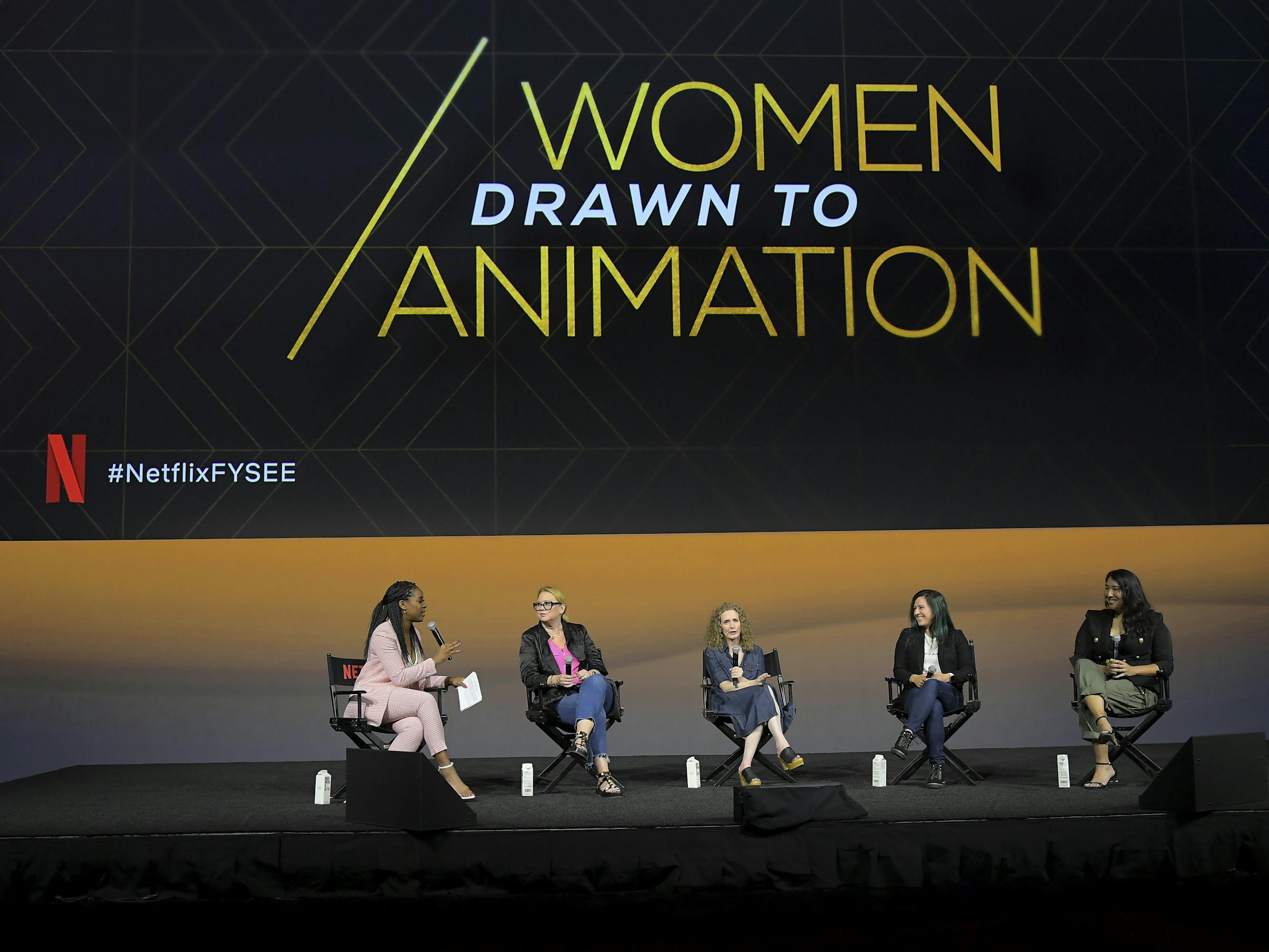
People Magazine's Janine Rubenstein, Melinda Dilger (Arcane), Jennifer Flackett (Big Mouth and Human Resources), Kelly Galuska (Human Resources), and Emily Dean (Love, Death + Robots)
Janine Rubenstein: All right. So I have a really tough one for you guys. Favorite childhood cartoon and why?
Melinda Dilger: Oh, man. Favorite childhood short was Michigan J. Frog, which was Chuck Jones. It’s so short. If you haven’t seen it, it’s the funniest thing I’ve ever seen in my life. And I cry still when I watch it. So that’s my favorite.
Jennifer Flackett: I love [the 1961 animated series] Top Cat. It’s a deep cut, Top Cat, but he was so cool. And I just feel like I learned a lot about being cool from Top Cat.
Kelly Galuska: Mine, I think, was Ren & Stimpy, which, I mean, it really informs how I ended up on Big Mouth. You know, [it was] disgusting and absurd, and I think really formed my humor as a young child. That’s for sure.
Emily Dean: Can I say three answers? So my first one was Neon Genesis Evangelion. My second would be Futurama. And Pokémon.
Rubenstein: Oh, if my son was here, he would flip out. Well, Melinda, Arcane is a huge fan favorite and critically — 100% on Rotten Tomatoes — which doesn’t happen very often, up for festivals, and all of these things. What has it been like to get that reception? Going into it, did you think this would be your reality?
Dilger: Well, that’s hilarious because when I first came to interview for this job I was like, Ugh, a gaming company is trying to do an animated TV show. This is going to suck. And so I went in for the interview and I didn’t really have my game on. They’re like, You’re going to meet about five people. This is going to be a pretty intensive interview process. And so, I sat down at Riot, and they’re like, Have you seen anything from the show? We have a little pilot that we’ve done; have you seen it? I was like, No, I haven’t seen it. They’re like, Okay, before you start your interviews, we’re going to press “Play” and see what you think. And then we’ll be back. And I’m sitting there [watching], and I’m like, Uh-oh, this is actually going to be really good, and I better get my A-game on. So no, I wasn’t expecting it at all.
To this day, I just can’t believe the honor that I’ve been given to work on such an amazing project. And it eventually came to be like this giant hit with fans around the world. It has a new fan base — it was supposed to just be a love letter to the players, and now it’s beloved by so many people that have never even heard of League of Legends. Plus, all the Emmys and all that stuff’s kind of cool, too.
Rubenstein: And tell me about working with Hailee Steinfeld and Ella Purnell who are voicing the sisters in the series.
Dilger: You know, those ladies, they’re just gorgeous women inside and out, but they’re fearless. A lot of us have childhood trauma, things that we dealt with in our past. Those girls had to tap into, Okay, which direction does the creator want us to go? And Hailee had to take Vi from this young, tough girl to a really kick-ass, tough girl who’s ready to punch anybody that comes near her. But she also had to tap into her vulnerability. And as women, we’re pretty complex, right? So to find that ability to weave through the tough girl exterior, Yeah, I’m tough. I had a tough life. I’ll punch your lights out. But man, I love my sister and I would do anything for her, and there’s also a part of me that wants to love and be nurtured. So Hailee did a phenomenal job with that.
Ella, oh my God, talk about baggage, right? I mean, whew, I can only imagine that she was extremely exhausted at the end of every record because she had to snap between being this young, beautiful, lovely, sweet, precious powder to maniacal and psychotic Jinx. And as people, as women, we have all of these emotions that we could go extremo on if you let us — hopefully you don’t always. But she was able to really run the gamut of all of that and do it in such a professional way. And they’re both just amazing to work with. So, really talented ladies, Hailee and Ella.
Rubenstein: Love it. Well, let’s talk a little Big Mouth because my introduction to this show was that it was on in the living room, and I was like, What are you watching? to my husband who was obsessed with the show. When you talk about Maya Rudolph, in this voiceover performance [playing] the Hormone Monstress we all know and love her as, why do you think audiences connect so closely with her and with Nick and Andrew and Missy and the rest of the crew? What is it about their story, which is relatable but also out of this world? Where’s the throughline for audiences to where this has become the hit that it is?
Flackett: Well, it’s so funny because right before Big Mouth came out, my husband and I, because we work together, we’re partners, he was lying in bed and he was like, I’m worried we’ve made a show for nobody because it’s a show about kids for adults. And that’s how we went to sleep that night. And then we woke up and we really realized that everyone’s gone through puberty — if you’re watching the show, you should be going through puberty or have gone through puberty. That’s what we tell people. And maybe some parents feel they should let their kids watch after puberty, and that’s fair, too. But it was really this thing of, Oh wow, these stories, what a potent time in life when you were becoming a person. We have a lot of embarrassment and shame about those times. I really remember getting my period for the first time, all those things. And to be able to tap into that for everyone and to be able to have this conversation, I think that’s a big part of it.
Then when you add in Nick Kroll and Maya Rudolph as our Hormone Monsters, our ideas run wild. I will say that Nick, as the Hormone Monster, came out fully formed. We said, “Hormone Monster,” to Nick, and he said, “Touch yourself, Andrew.” And that was just that, and it was done. It was a harder journey to get to the Hormone Monstress. It was really like, “Okay, what is she?” And so when Maya came in, because she had originally been cast as Nick’s mother, we were like, Do you want to do the Hormone Monstress too? And she created that with us, and she was able to bring that completely and utterly to life.
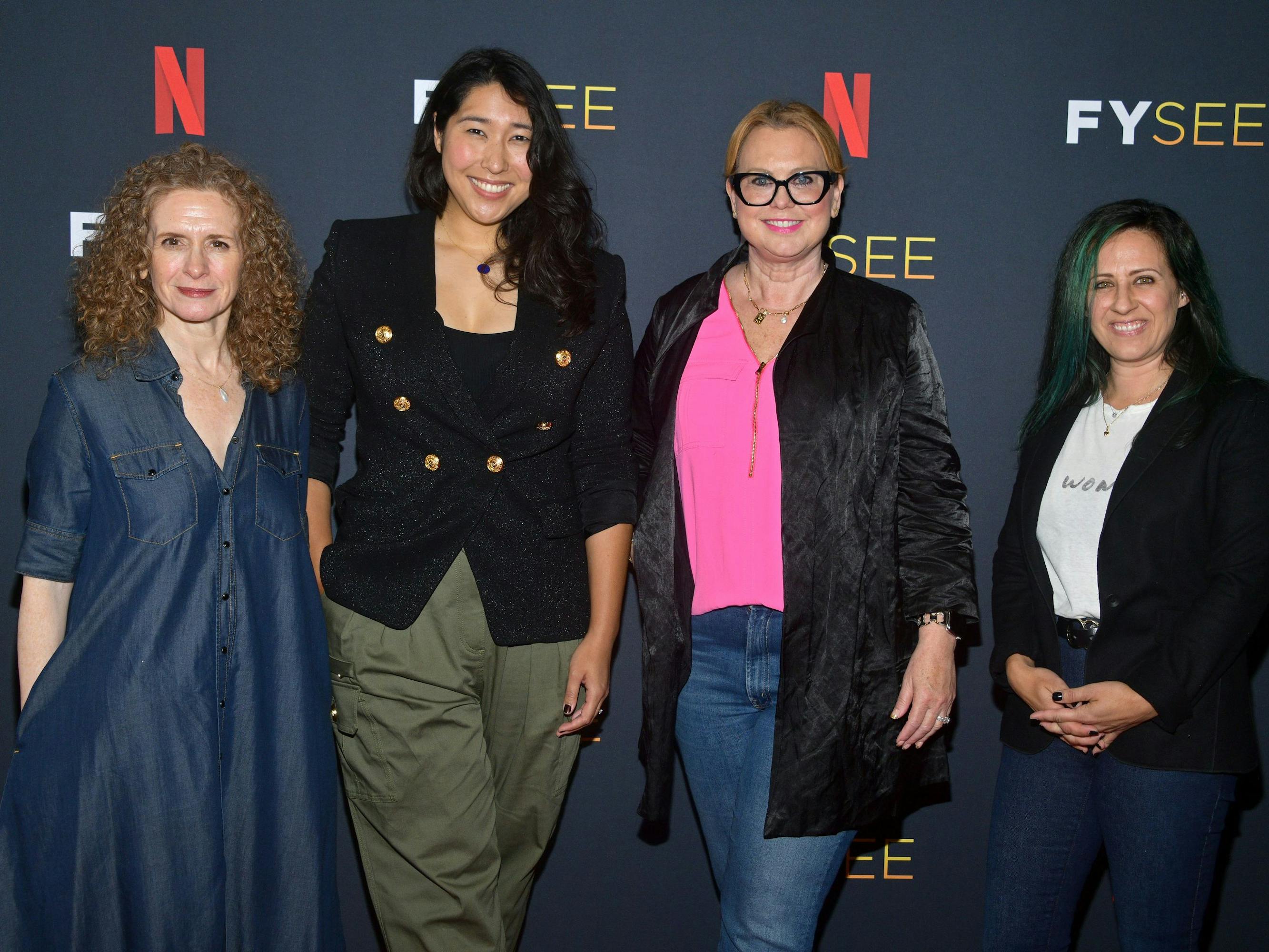
Jennifer Flackett (Big Mouth and Human Resources), Emily Dean (Love, Death + Robots), Melinda Dilger (Arcane), and Kelly Galuska (Human Resources)
Rubenstein: It doesn’t surprise me that the Hormone Monster came more naturally. I’m just going to say that. Well, Kelly, Human Resources takes [Big Mouth] a step further, a step more adult, right? I mean, it’s animated, but you’re going into some deep, kind of dark stuff, and it’s still funny. Let’s take grief: Do you think there’s something particular about animation that is uniquely suited for that kind of deeply emotional content, even though it wouldn’t naturally come to mind like, Hmm, I need to watch a cartoon for this?
Galuska: Absolutely. Human Resources is a very good example of a show that could not exist in live-action. It just simply couldn’t because most all of our main characters are creatures, monsters that represent our emotions and everything going on in our brains constantly. So it’s something we couldn’t really do if we tried to do it live-action. That just would be kind of cheesy looking, I think, if we did it that way. But it also allows us to dig into these deep emotions that all humans have had experience with, like grief, like losing somebody. And because this show is animated, we can anthropomorphize grief and show how grief gets really, really huge if you ignore it. It gets to be really scary. But if you give in to it, it’s a comfort. It’s something that you need to have as a part of your life. And it’s something that we were able to visualize, which is really nice, and juxtapose with some insanity, like penises boxing each other, for instance.
Flackett: I would like to give a shout-out to Henry Winkler, too, as Keith from Grief, because that voice really gave us that comfort.
Galuska: I mean, he is a warm sweater of a human being. He truly is. And so it was a perfect fit.
Rubenstein: I love me some Henry Winkler. Let’s talk about Aidy Bryant as Emmy, the Lovebug. How does she do that?
Galuska: I mean, thank God for Aidy Bryant, let me say, because Emmy was a hard character to create. We went through many iterations of her because she’s a mess. She’s a total mess. She doesn’t know what she’s doing, and that could easily get really annoying. But Aidy brings this warmth to everything she does. Her voice is so playful and so likable that she helps you remember that mess that you were and understand it and relate to it, and being thrown into something you have no idea about and working your way through it. Aidy really created Emmy, truly, similarly to Maya creating Connie [the Hormone Monstress]. She has such surprising reads of mundane lines that we’re like, “That wasn’t meant to be a joke, but thank you for making it one.” She’s wonderful.
Rubenstein: For sure. Emily, let’s talk Love, Death + Robots. Tell us about “The Very Pulse of the Machine” and just what it was like bringing that particular story to life.
Dean: Without giving spoilers to the story, it’s basically about an astronaut who is stranded on the moon of IO, and she has to make her way back to the Lunar Lander. She takes drugs to keep herself awake, and things get pretty trippy. But yeah, the way that I came to work on Love, Death + Robots was that I got an email saying, “Do you want to come in and read some stories?” As soon as I arrived at Blur Studio, the incredible Jennifer Yuh Nelson was there to greet me. I gave her a big hug and said, “I love the show. I love Volume 1. I will do anything to work on this show. It’s just such a groundbreaking anthology of different kinds of animation.”
And so, I landed on “The Very Pulse of the Machine.” It’s a female main character, and I felt like I really wanted to tell that story. I pitched the idea, I guess it was three years ago now. It was originally meant to be in Volume 2, but the technology we needed to work on. So that’s why it’s in Volume 3. And I said, “This is the way I want it to look. This is what I want to do.” Jennifer said — excuse my language — she said, “We have no idea how the fuck we’re going to do this, but that’s what this show is here for. And we’re really excited to make it with you.”
Rubenstein: That’s so exciting. I wish these types of work environments on all of us. But you touch on technology there, and I want to pose that to all of you. What has evolving technology done for your jobs? What is the most important thing that’s come up that you’re like, Oh, that makes my animation job so much easier?
Dilger: It’s still hard. For Arcane, what’s been super cool about technology and how far it’s come is we are able to . . . You could never marry 2D with C.G. Now you can marry the two. You can do all kinds of things through compositing and effects. And the computer’s a magical, magical thing. We’re able to take really amazing 2D work and marry it with C.G. So that’s worked out really well for Arcane.
Flackett: Yeah. I mean, we’re a real 2D show, but what I really think about technology is [what happened] during COVID. We went home on a Thursday, and we all kept going on Friday, and we never stopped. We still haven’t stopped. A couple weeks before that, we were talking about, Well, no, we all need to be in the same environment together. It would be impossible if we’re not in the same environment. It can’t be done. Literally, that was a conversation, for some reason, we were having about space. And then two weeks later, we all can keep going, and that was incredible.
Galuska: That’s exactly it. Like Human Resources, we’ve worked on two seasons. We’ve been working on Season 2, and there are people I’ve never met in real life. And we can do that because of Zoom. We can cut things because of Evercast. We’re able to edit remotely. It’s remarkable. We couldn’t have made this show without that technology. So I’m very, very grateful for that.
Rubenstein: Well, Emily, take me into the weeds of what the technology was needed for your show that exists now.
Dean: So three years ago there was sort of edging into cell shading technology, which is kind of a C.G. model, but with 2D line work around it. It’s been done in a lot of things, but to get the particular kind of detail that we’re going for . . . I had pitched the episode to be inspired by Mobius as a love letter to the great comic book artist, if you’re familiar. And so just to get that level of detail on every rock, every little line on her face that moves, they had to kind of create a map of her face. And when she changed expressions, the line work would change with the expressions on her face to make it look as though it was hand-drawn. So that took a very long time. I really credit Polygon Pictures in Japan for all their incredible work developing this for the show.
